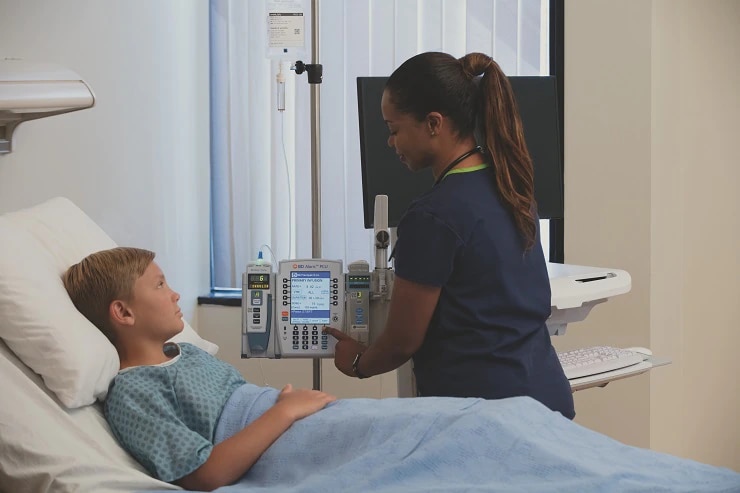Enhancing DERS with smart pump-EMR interoperability
When DERS was first introduced in 2005, only 32.2% of U.S. hospitals had adopted smart pumps—a figure that has since made a significant jump to 80.5% in 2014.² During that nine year period, a lot was learned and improved upon—for our part, BD gleaned much from our experience implementing smart pumps at over 300 live sites. We’ve discovered that hospitals have started to look more closely at medical errors overall and they’re taking action to improve, as shown by the increased use of EHR, CPOE and BCMA.
Smart pump-EMR interoperability results in a more complete and accurate library, which helps ensure DERS use when manual programming of a pump is required. In healthcare, we need to redefine what DERS compliance means, continuously questioning our perception of what ‘good’ looks like by asking “What are the best practices for IV administration?” and “What metrics/evidence will help us to measure safety?”
There are some errors that smart pump interoperability cannot prevent, such as set-up issues including labeling and tubing. Additionally, there will be times when interoperability is out of scope, and DERS will need to be in place to protect manual programming. Smart pump integration is not perfect and there is room for improvement. As an industry, we are still at the beginning of this journey as evidenced by the fact that today, among the U.S. hospitals that have adopted smart pumps, approximately 300 have smart pump-EMR interoperability, or 5% of acute care hospitals.⁸,⁹
Hospitals need comprehensive solutions that include best practice polices/procedures and technologies such as CPOE, BCMA, DERS and interoperability. Smart pump-EMR interoperability is not intended to replace DERS, but rather enhance it with improved protections for the patient during infusion therapy. Together, DERS and EMR interoperability are the best solutions to safeguard end-to-end IV safety.
